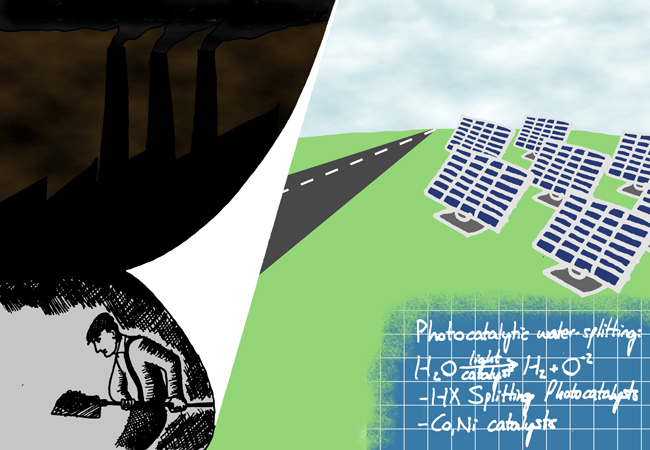A future where humanity would be able to harness the power of renewable resources, such as water and sunlight, to produce energy for the world may seem to be too good to be true. But that is the future envisioned by one Harvard scientist, formerly from the Massachusetts Institute of Technology, who created an artificial leaf out of cheap and abundant natural materials.
Daniel Nocera, an energy professor and founder of Sun Catalytix, an energy storage engineering company, set out to create a technology that mimics the process of photosynthesis while minimizing waste and pollution, increasing energy yields and keeping the price of the resulting product affordable for developed countries.
Photosynthesis has powered the world since the evolution of the first cyanobacteria 2.7 billion years ago. The first land plants followed suit about half a billion years ago, starting with mosses and liverworts, eventually resulting in vascular plants such as trees, ferns and grasses.
Plants use light energy, carbon dioxide and water to store energy in the bonds of sugar. In a typical vascular plant, carbon dioxide enters through holes in the leaves called stomata while the majority of water enters through the plant’s root system. From the sunlight, the plant can rearrange chemical bonds to produce carbohydrates in the form of food and oxygen.
The technology behind the artificial leaf follows a similar process. It takes the energy of the sun to split water into hydrogen and oxygen but does so without the need for carbon dioxide or connection to a power grid. In effect, the wafer-like artificial leaf stores the hydrogen and oxygen and uses them as energy, similar to what a leaf does during photosynthesis. While the chemical process is not identical, Nocera says that the spirit is the same.
A silicon wafer about the size of a quarter is coated with a hydrogen-producing catalyst on one side and an oxygen-producing catalyst on the other. When the wafer is submerged in water and placed in direct light, the catalysts begin the process of splitting water. The hydrogen and oxygen then travel in streams through a wire and tube network in a device invented by Nocera and his lab team. The elements reunite in a chamber within the device to create a surge of power that results in electricity.
Scientists have calculated that two to three 16-ounce bottles of water combined with the artificial leaf and direct sunlight can theoretically power an average home in a developed country for an entire day without the use of additional electricity or gas.
The artificial leaf can collect and store small amounts of energy — enough to power a small fan, for example. A system for safely storing large amounts of the volatile hydrogen and oxygen is not yet available to the public, which led Nocera to found Sun Catalytix, a company geared at producing a safe energy storage system.
The chemical engineering department of the Cockrell School of Engineering cites the need for sustainable energy as one of the most important challenges in science and engineering fields today. Research from the department includes efforts to both produce and store energy, which has the potential to provide answers to some of the questions left by the artificial leaf technology.
One of most pressing issues is the cost of producing clean energy. For Nocera, the rise of the artificial leaf is stunted by the price of producing energy on a large scale. Furthering the development of the technology is costly, which is why some scientists do not believe the artificial leaf will be introduced in the commercial sphere any time soon. Others predict that Sun Catalytix will be able to develop an energy storing system that could support the artificial leaf, but that it will look similar to the current model in which the public pays a company for their energy use instead of producing it on their own.
Clean technologies continue to be a pressing topic in the energy conversation, an exchange that may soon have another voice through the artificial leaf with the support of Sun Catalytix. The idea of using renewable resources to produce electricity for the world is certainly attractive to those who seek to uproot the energy system of the current day and sow a new seed of sustainability.















